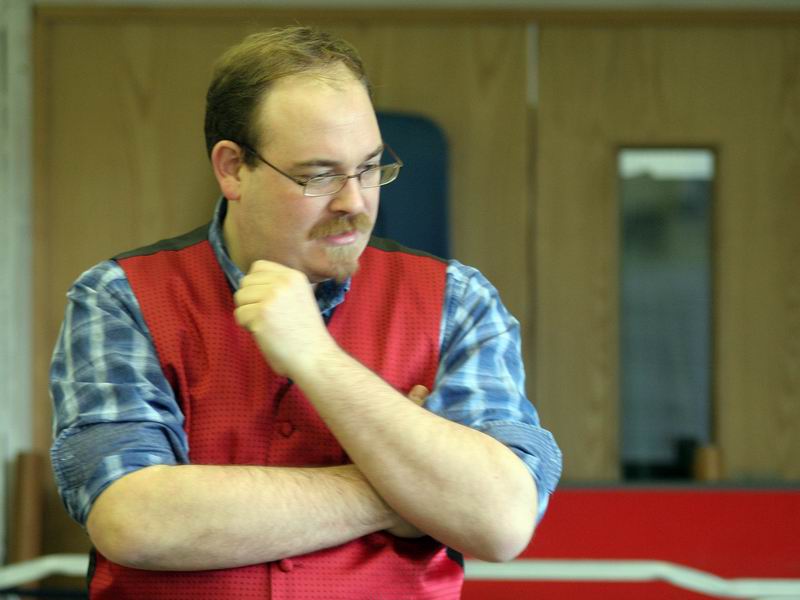Having come up with his comprehensive military appreciation Hohenlohe then got around to issuing his orders. The preamble, and the element that directly concerned my command are here:
Orders for Prussian Army The enemy is confident and their morale is high. We can expect them to react quickly to any action and march rapidly to the sound of the guns. The ground and the early morning mist should delay their initial reinforcements, but by about 10:30 am I expect significant French reinforcements to be entering the proposed battle area. I expect the enemy to make an initial attempt to break our forward line and surge forward onto the high plateaux. If this initial assault is thwarted they will then attempt to envelop our flanks using the numerous small tributary valleys to gain ingress. Their tactical doctrine calls for close quarter battle and speed of action. Cavalry and light troops will exploit any breaks they are able to make. We can expect them, therefore to press their attacks vigorously. The enemy currently has about 25,000 men able to conduct operations immediately. This could grow to upwards of 85,000 if all French forces concentrate in the Jena area.
Friendly Forces: Currently our forces are deployed as follows:
von Tauentzein – see ORBAT, forward element between Closewitz and Lutzeroda
von Holtzendorf – see ORBAT, in the area of Rodigen
von Zeschwitz – see ORBAT, deployed south of Isserstedt
von Grawert – see ORBAT, deployed between Isserstadt-Gross-Romstedt-Kotschau
von Ruchel – see ORBAT, in the Weimar area.

Our troops are well trained but lack experience. We have good cavalry and enough artillery. Our lack of battle experience means that we must, where possible, use our men to defend locations, thereby giving them the tactical advantage. We have approximately 8,000 men able to conduct operations Ground We are situated on a large rolling plain. To our immediate front is the valley of the River Saale . The valley is steep and the river has limited crossing points. The slopes are widely forested and only passable to Light Troops. The plateau is covered in a succession of lines of small villages. Beyond the initial deployment area there are few woods. There are plentiful transverse roads allowing us to move rapidly along any front.
MISSION Our mission is to delay the French Army long enough to allow the King’s army to concentrate in its rear.
CONCEPT OF OPERATIONS:

This will be a 3 Phase operation. See operations map. (previous post)
Phase1: Vanguard Battle.
GM Tautenzeim will hold the villages of Closewitz and Lutzeroda (Phase Line Alpha). His forces will repel the initial French attacks inflicting maximum casualties upon them. During this phase all other forces will move to position for subsequent phases. The phase will end with the withdrawal of von Tautenzeim’s Division from the villages.
Phase 2: Main Defensive Battle. The Divisions of von Holtzendorff, von Grawert and von Zeschwitz will form a main defensive line utilising the villages along Phase Line Bravo. These forces will force the French to deploy and conduct deliberate operations to take the villages. The divisions will inflict maximum casualties on the enemy by the use of massed firepower. This phase will end when either: a. French pressure becomes too great and we are forced to withdraw. b. French forces are able to outflank one or both flanks c. French forces start to withdraw from the field.
Phase 3: Subsequent Operations. Phase 3 will consist of either: a. Falling back to new defensive lines marked as Phase Lines Charlie and Delta on the operations map. b. Advance in pursuit of retreating French forces.
The correlation of forces is such that Phase 3, option b may be unlikely. However, should the King be able to manoeuvre into the French rear their position may well become untenable. This option allows for us to pursue in support of the King’s actions. In all other circumstances we will organise subsequent lines of battle on the indicated Phase Lines.
Exact orders will be issued by me to Divisional Commanders as required.

TROOPS TO TASKS
GM von Tauentzein
1. Occupy Phase Line Alpha in the vicinity of Closewitz and Lutzeroda.
2. Repel all French attacks on your positions, conserving your forces as much as possible.
3. Withdraw upon either my orders or upon word of a French flanking manoeuvre.
4. When you withdraw send word to GD von Zeschwitz that you are evacuating your forward positions.
5. Form Corps strategic reserve during Phase 2, on Phase Line Charlie.
6. Upon withdrawal to Corps strategic reserve GM von Tauentzein is to report to the Corps commander at the Windmill.
7. During Phase 3 be prepared to undertake any actions required.
My interpretation
So what was to be made of these orders? I cannot say that they were going to be easy. In fact a fighting withdrawal would have been hard enough against one full French corps, but deciding how long to hold on before conducting that withdrawal, well, that was going to be left up to me too. I had also decided that I was going to adopt as close to historical deployments for my troops as possible. For that I had found a German Army map, probably from around 1890, with the forces’ positions on it and it did not look good. With the small command radius of the Prussians having units scattered all over and out of command was not a good thing but I wanted to see just how difficult holding off Lannes was going to be.
J


















